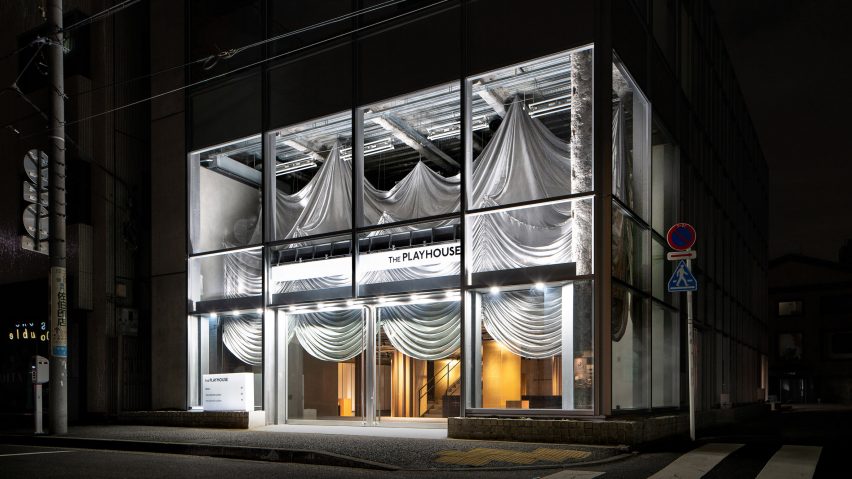
Theatrical curtains enclose the entrance of Tokyo fashion store The Playhouse
Architecture studios Pan Projects and Haruki Oku Design have renovated a fashion store in Tokyo using moving curtains and rotating walls to create adaptable retail and events spaces.
Renamed The Playhouse, the building for the Vulcanize fashion store in the Aoyama district was directly informed by the theatre with a dramatic facade animated by moving curtains.
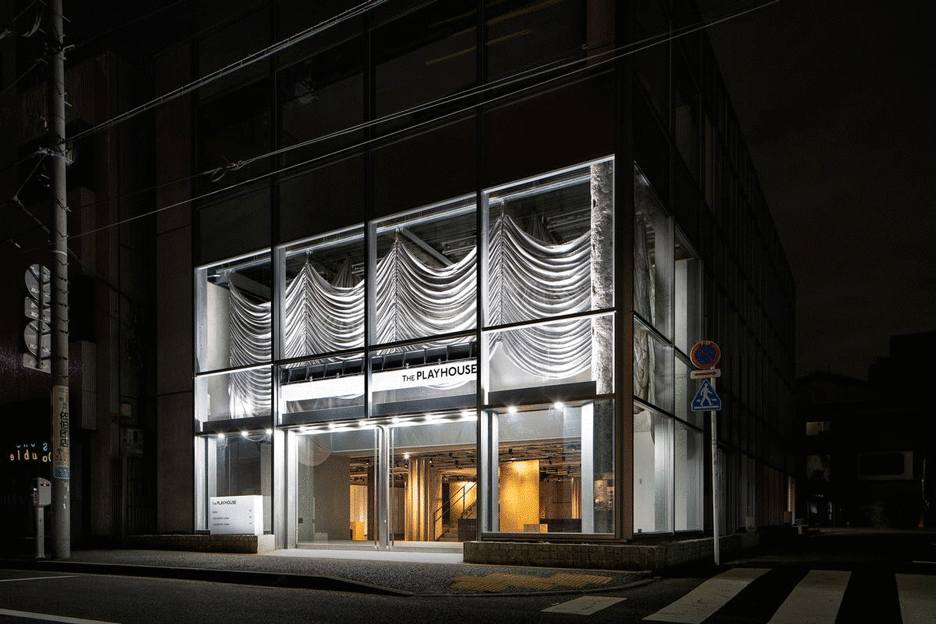
London-based Pan Projects worked with local studio Haruki Oku Design to renovate the three-storey building, which had all its interior elements removed to create flexible spaces.
"We basically removed all the existing interior elements to simplify the space to have one big open space where movable walls can come in," Pan Projects co-founder Kazumasa Takada told Dezeen.
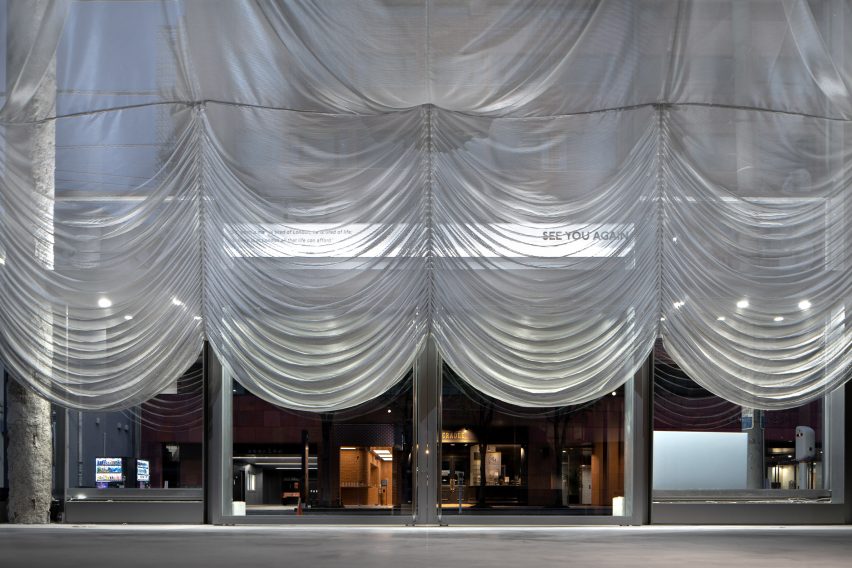
Designed to be both an entrance area and a performance space for 50 people, The Playhouse's atrium was conceived as a fly tower – the expansive open volume that sits above a theatre stage and holds its rigging system.
It was wrapped in a large, moveable curtain, designed in collaboration with Studio Onder de Linde, which was hung from an aluminium frame suspended from the ceiling beams by wires connected to a winch that is hidden behind the ceiling.
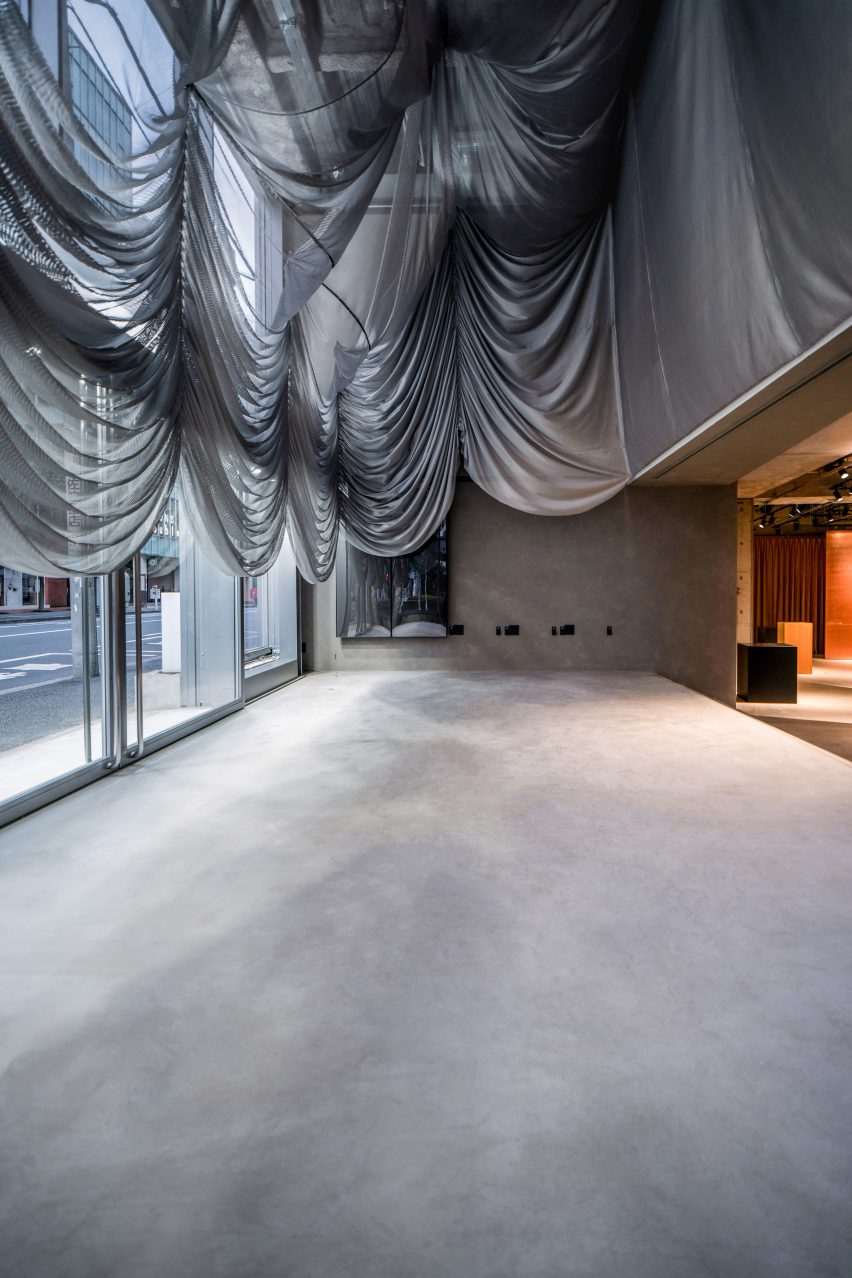
"The ground floor is designed to be used not only for goods sales but also to accommodate multiple events such as workshops, music events and fashion shows," Takada said.
"This movable curtain transforms the entrance area into a temporal show stage which can accommodate up to 50 audiences," he added.
"The curtain stays up when the store provides regular services, but it comes down when there is an event happening."
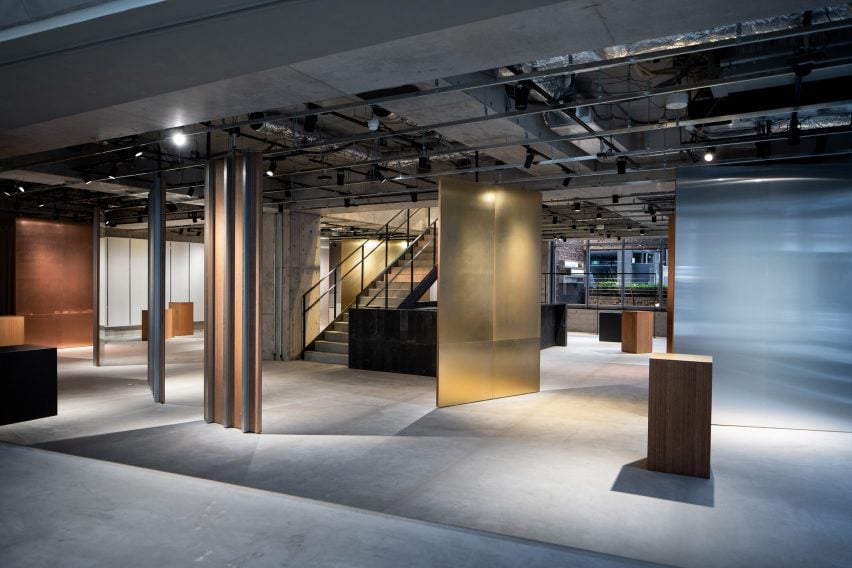
Beyond the entrance, the ground floor is divided into different sections by a number of moveable, rotating walls made from plywood with aluminium, copper and brass finishes. These are manoeuvred using rotating shafts attached to rails in the ceiling.
Along with drapes hung from the ceiling, these create pop-up shops for brands that occupy space within the Vulcanize store on a month-by-month basis.
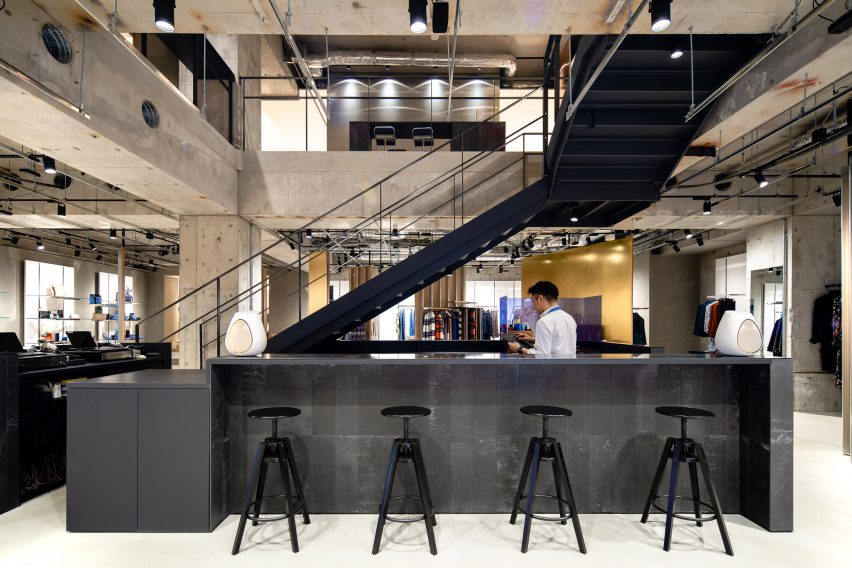
A staircase in the centre of the room leads to the first floor, where a foyer functions as a display area for the store's permanent brands.
This floor also has a VIP room, a bar and a number of small meeting rooms.
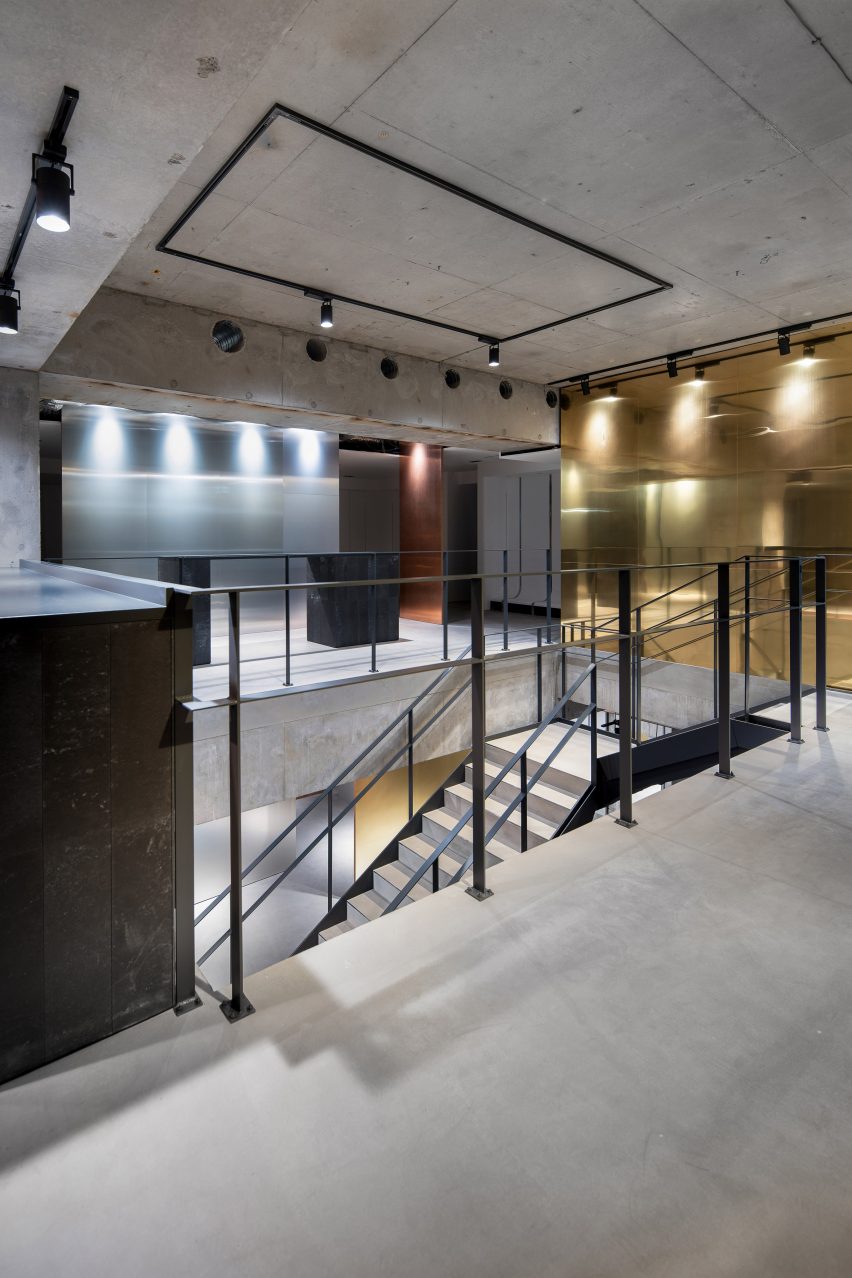
Above the fashion store, the second floor houses an event hall used by a company that creates custom-made wedding parties.
"The two clients collaborate closely to organise events and workshops using the entire building," Takada explained.
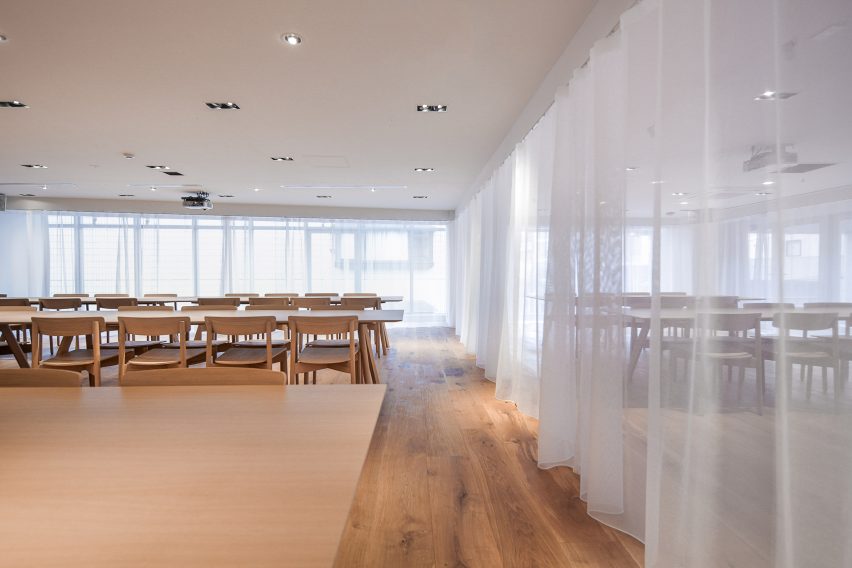
The idea of referencing theatre and performances when designing the interior came from a wish to revisit shopping experiences previously found in Aoyama, which used to be a "mecca for street cultures".
"What inspired us is the radical shift of shopping experience where online shopping became more popular due to the pandemic," Takada said.
"This rapid shift indicates the sales of goods are not fully depending on physical stores but rather happening online."
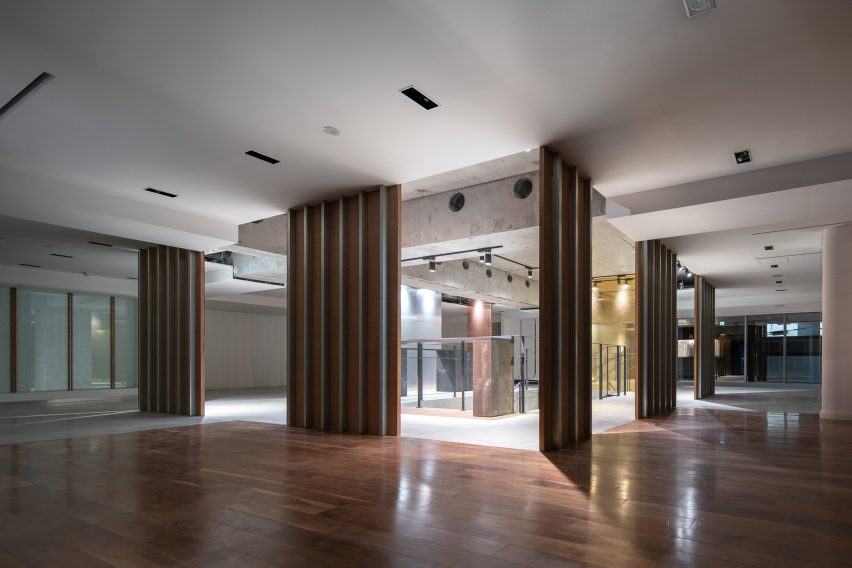
"We analysed this shift with the clients and decided to create the physical store as a cultural venue where customers can understand the culture of the brands more through diverse events," he added.
Other recent Tokyo store designs include an Hermès store designed to evoke aspects of Japanese nature and culture and a Louis Vuitton store in Ginza wrapped in an undulating pearlescent facade.
Photography is by Kenji Seo.
Project credits:
Lead architects: Pan Projects: Yuriko Yagi, Kazumasa Takada
Haruki Oku Design: Haruki Oku
Silver marquee curtain design: Studio Onder de Linde
Clients: Crazy, Inc. and BLBG, Inc
Construction and millworks: Accamplish Co., Ltd. and Relive Co., Ltd